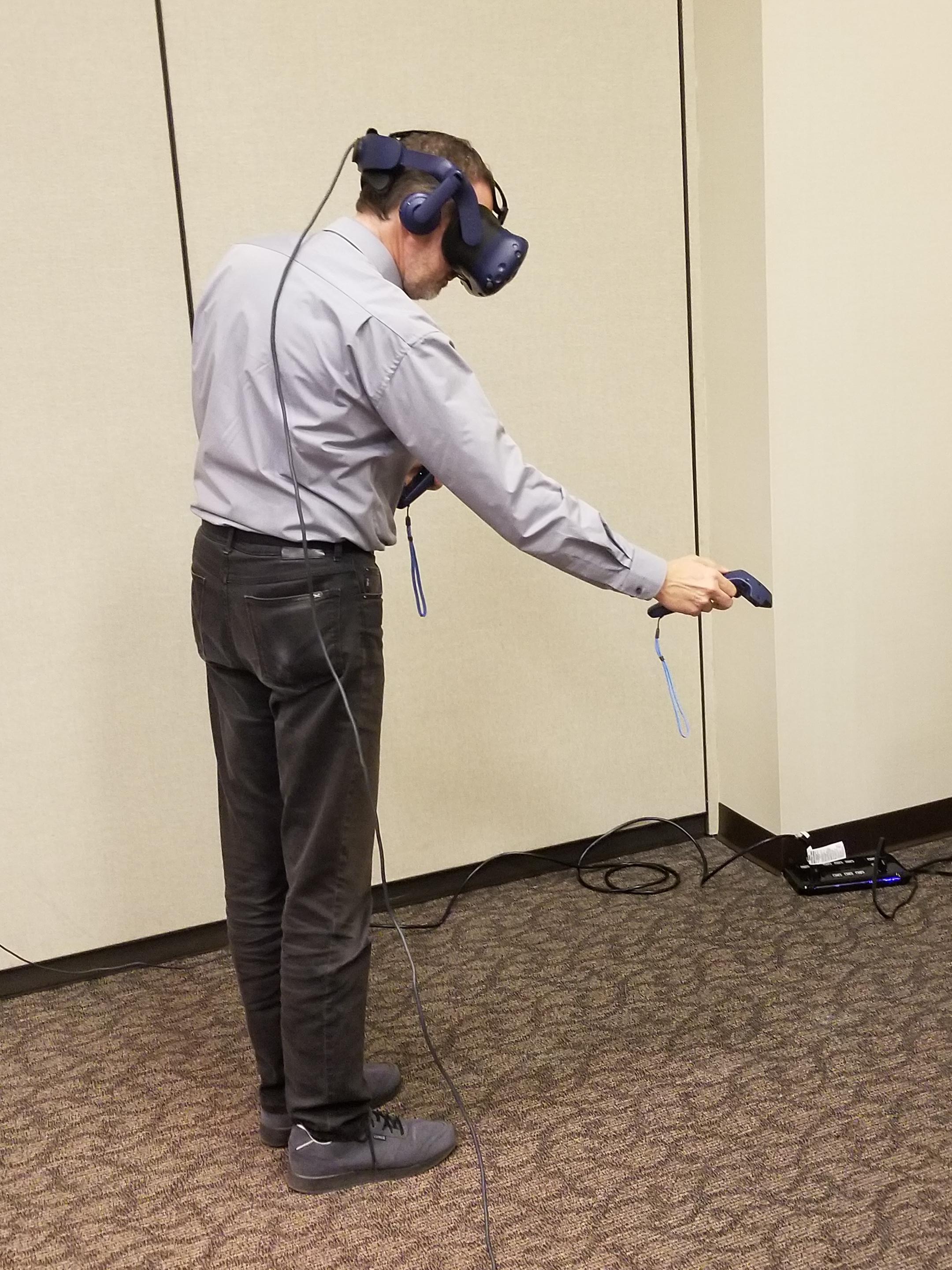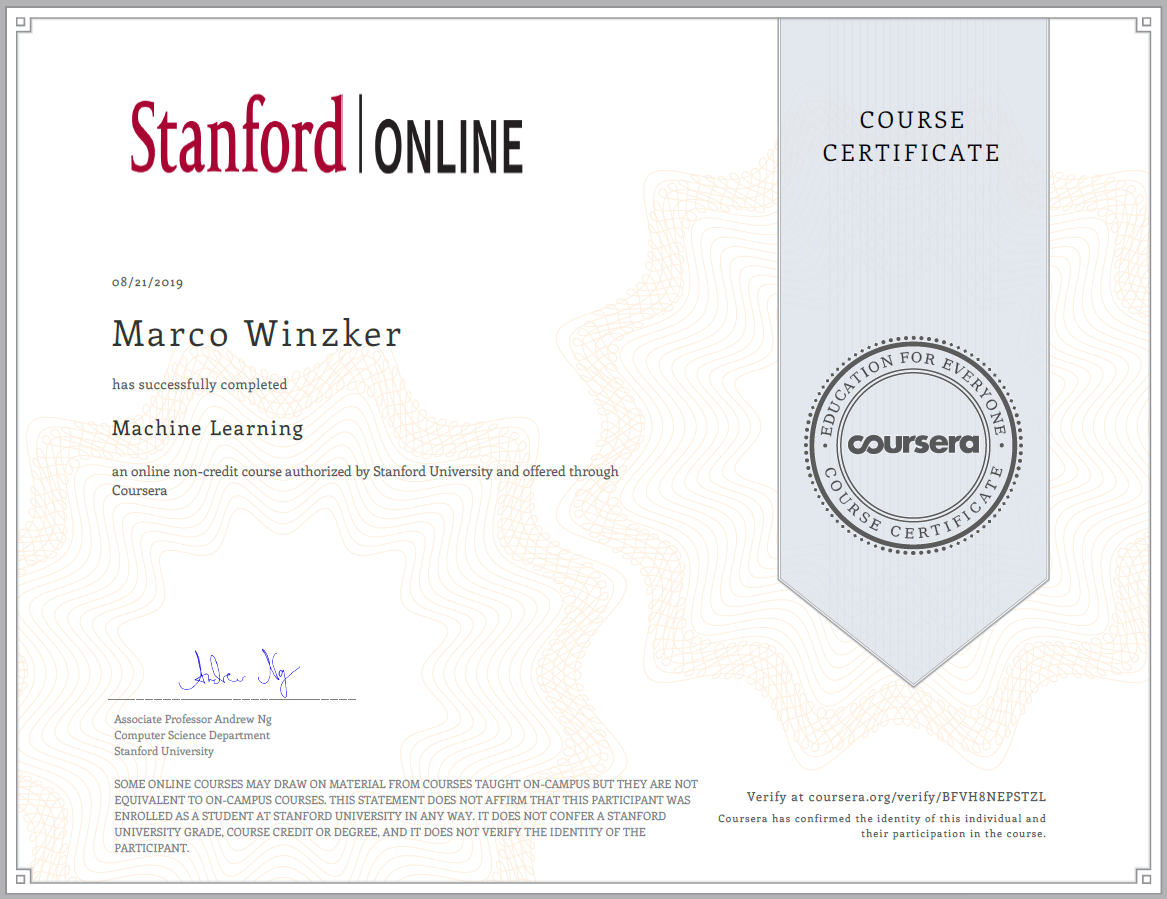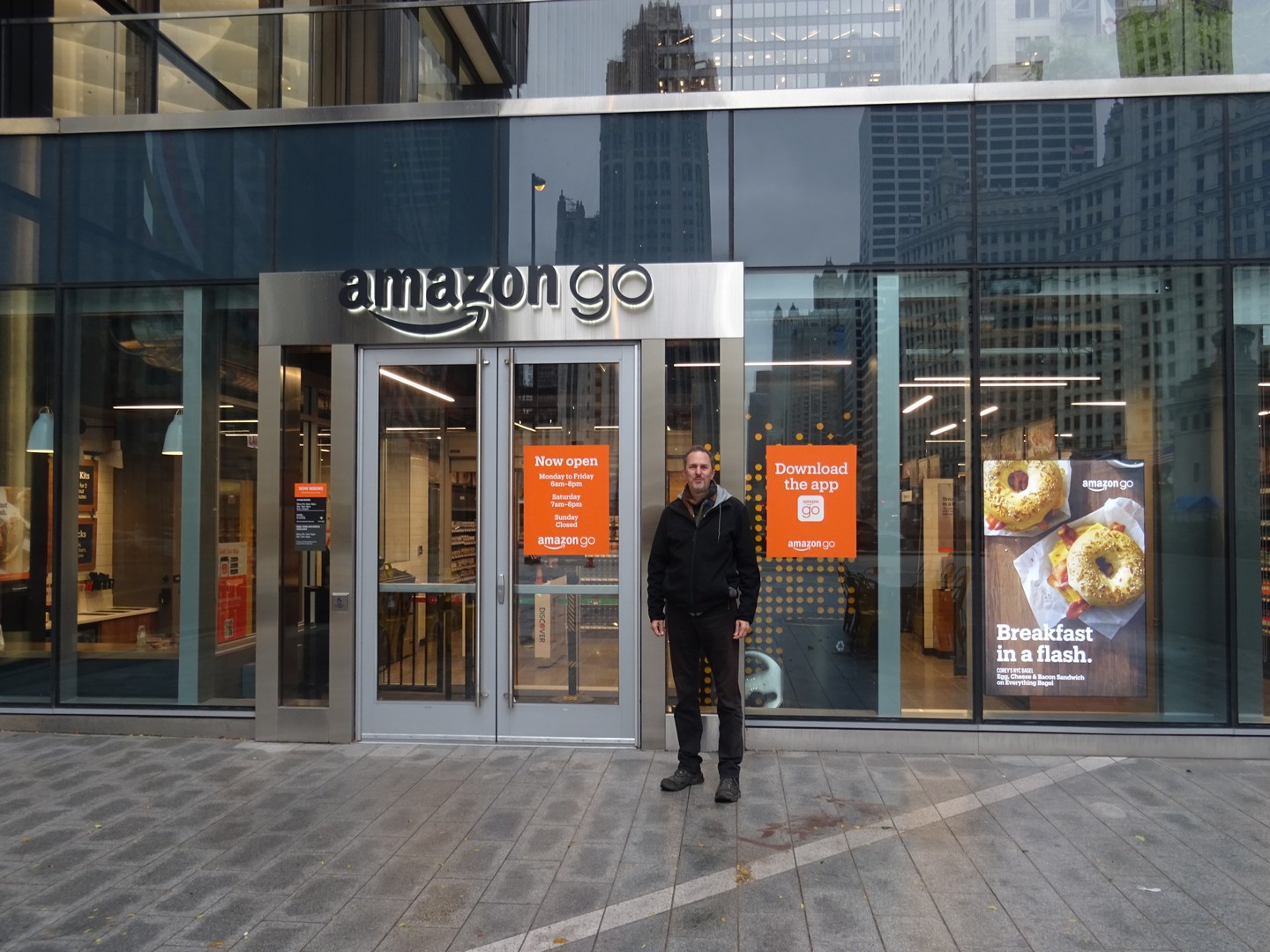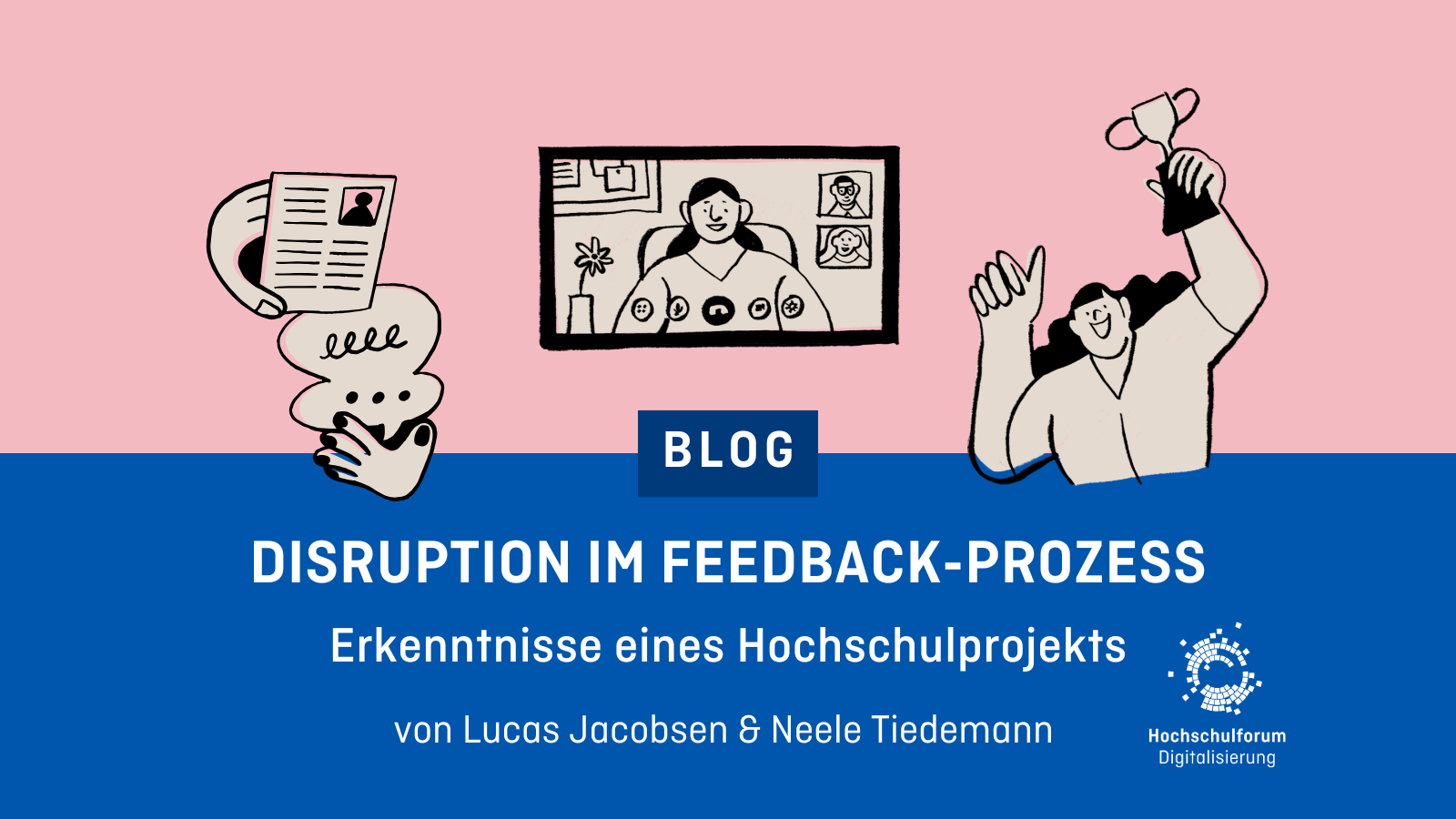Conference Trip to the USA – Thoughts on Digitization and University Teaching
Conference Trip to the USA – Thoughts on Digitization and University Teaching
05.12.19
The trip to the USA and the conference participation of Frontiers in Education and Learning with MOOCs presented as a Learning Journey. Marco Winzker reports on the use of virtual reality in diversity management, cloud software for universities and predicts a change in the education system through MOOCs. During his stay in Chicago, Winzker experienced the future of digitized everyday life.
This article was automatically translated using DeepL Translator. Please excuse any errors.

Is it coincidence or is it the topic? In October 2019 the #EdExperts, a German-American university travel group, were on an excursion to the USA. Susanne Staude reports in her Blogpost. Shortly afterwards I was also in the USA and took part in two conferences that also dealt with university teaching and digitisation.
Travel route
At first I was at the Frontiers in Education in Cincinnati, a quite big conference with about 500 participants. There I presented evaluation results of our remote lab. Then I went to Learning with MOOCs in Milwaukee, smaller with about 100 participants and thematically focused on Massive Open Online Courses. Both conferences were organized by IEEE, the worldwide active engineering association “Institute of Electrical and Electronics Engineers”. In between there was still time for a stop in Chicago, which also had its meaning, but later on.
I have sorted my observations by topic and not chronologically.
Virtual Reality in Teaching

I had seen feasibility demonstrations before, but now I could try a convincing didactic application for Virtual Reality. The subject was discrimination and with VR glasses I could slip into the body of a black woman as a white man, which was visible by looking at my hands and in the mirror. In the VR application I applied for a PhD position with a young, white professor who rejected me because of my educational background.
Through the first-person-view this was a surprisingly intense experience, through which one can understand discrimination very well and experience it emotionally. In teaching, this application provides experience in the field of diversity management. Through the intensive experience, however, a subsequent reflection and classification also seems sensible to me.
Software in the Cloud
At the conferences, systems were presented in which universities access infrastructure in the cloud.
- Canvas LMS (Learning Management System) was called several times and I could use it for a workshop. The provider provides the computing power, provides fast updates and of course an app is also available.
- Open edX is the freely accessible software from the edX consortium that can be installed on your own server. Or you can book this service, offer single courses with an inexpensive package and grow depending on your experience and acceptance.
- Also Student programming exercises are possible in the cloud. Of course, this is primarily where the industry buys cloud computing power. Google advertised machine learning on their computers and allocates $50 credit for computing capacity. Elsewhere, an online database for SQL programming was mentioned.
In industry, the principle of “make or buy” has been around for a long time and I think that universities should also give more thought to whether they produce a service themselves or resort to external solutions. Another argument is certainly the difficulty of finding IT specialists.
And now to MOOCs
Are MOOCs dead yet? Or will they revolutionize higher education structures? Susanne Staude writes: “[MOOCs] did not turn out to be as system-changing as we thought”
My impression is, MOOCs are alive and kicking and will slowly but surely change the education system. Keywords that I have often heard about are upskilling, badging and monetization.
- Upskilling means that individual skills are specifically learned in order to get the next promotion or the next job. If “Machine Learning” is in demand on the job market, then I add a MOOC. If I want to become a group leader, there are also suitable MOOCs for this.
- Badging are the qualifications, the badges, the MOOC providers give me for it. This allows me to prove that I have acquired the qualifications.
- And with that we are at monetization, because if I earn more money in the next job, then I invest in MOOCs time and money beforehand.
That is, of course, a rather American view of things, which does not quite fit the German educational mission of the universities. But somehow I like this pragmatic attitude. And the figures for 2018 also underline the importance: according to ClassCentral, the four largest MOOC providers made a profit of around 300 million dollars.
![Usage revenues of MOOCs 2018. Bild: [https://www.classcentral.com/report/mooc-stats-2019/ Class Central] Nutzungsumsatz von MOOCs 2018](/sites/default/files/images/blog/MOOCs_Nutzung_Umsatz_2018_ClassCentral_0.png)
What does this mean for the universities?

I see the first challenge for Master’s programs. I can judge it best for universities of applied sciences and there bachelor graduates are currently in great demand in industry. Why should a student still spend three semesters at the university and take modules that are prescribed by the examination regulations? It’s much better to work, earn money and choose MOOC courses that interest and help you. And instead of the Master’s degree you have the certificates of the courses.
Integration of MOOCs
How can universities react to MOOCs? An example was shown by the University of Iceland. Iceland, I wasn’t aware of that, has only 360,000 inhabitants. Of course, you won’t find a professor in Iceland for every topic. Students have therefore taken MOOCs on Deep Learning or Power Electronics. The evaluation was carried out by combining the MOOC degree with a degree achieved locally at the University of Iceland, in these cases a project report or presentation.
In the experience of the University of Iceland, a MOOC provider should be selected that provides clear information on course content and learning objectives. Students should register for the chosen course and complete it with a certificate from the provider. A timetable and the local degree achievement should be agreed in advance for recognition.
Microcredentials
I have also encountered the term microcredentials, just like Susanne Staude. Probably there are several definitions here; I find the approach of the European MOOC Consortiums promising. A Common Microcredential Framework will define framework conditions for courses, including a uniform 100-150-hour course length, summative assessment with proof of identity, and a transcript of the services provided. The courses should be possible in addition to professional and family commitments and enable lifelong learning.
I personally find the proof of identity exciting, because this is a frequently mentioned criticism of online courses. I can well imagine that people here will benefit from developments in online banking or e-government. If there is a identity verification infrastructure , perhaps using speech recognition or fingerprint scanners, it can be used for microcredentials. This may not happen yet in 2020, but, my guess, well before 2030.
Digitalization in daily life
And that’ll get us to Chicago. There is Amazon Go and I had to try it. Amazon Go is a shop without a cash register. I need an Amazon account, identify myself at the entrance with a QR code and then get observed permanently by about 100 cameras. I can take free goods from the shelf, put them back if I don’t like them and then leave the store without waiting at a checkout. One minute later I have the proof of purchase on my Smartphone. The range of goods mainly includes food and the idea is that during the office break or on the way to the metro you can quickly buy a sandwich and a Coke without wasting a lot of time.

I also tried the driving service for the first time. Yes, you can criticize a lot about the Share-Economy, but now I want to focus on digitization. And there are only advantages for me as a customer. I see the price before the booking, I don’t need to handle cash or credit card when getting off the bus and I give the tip after the trip. In addition, the driver knows via the app where I want to go. That wouldn’t be the problem for me in the USA, but in China I have already worked with notes and in Jordan taxi drivers and I had to ask several passers-by for translation. It all worked out, but with digitalization it’s more convenient.
An over-driver told me he used to drive taxis and taxis now have only 25% market share. I didn’t check the number, but it seems plausible. Also in linguistic usage Uber arrived. “You can over to it” was the distance indication for a museum.
Conclusion
Uber’s rise shows that you can’t choose whether you want digitisation or not. It comes and you can help shape it and adapt to it. That’s why the example of the University of Iceland is so positive for me. MOOCs are used sensibly to strengthen one’s own offer.



 Alessandra Reß
Alessandra Reß 
 Sebastian Horndasch
Sebastian Horndasch 
 Lucas Jacobsen
Lucas Jacobsen 